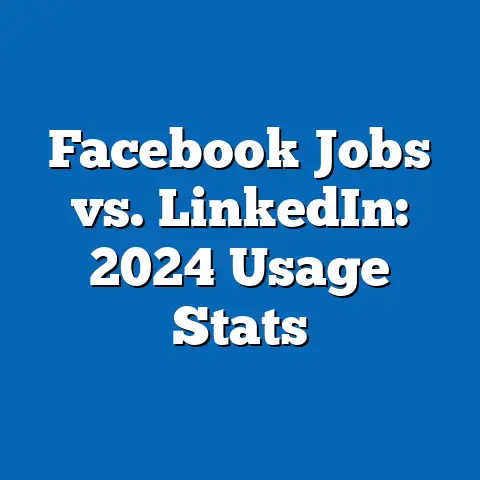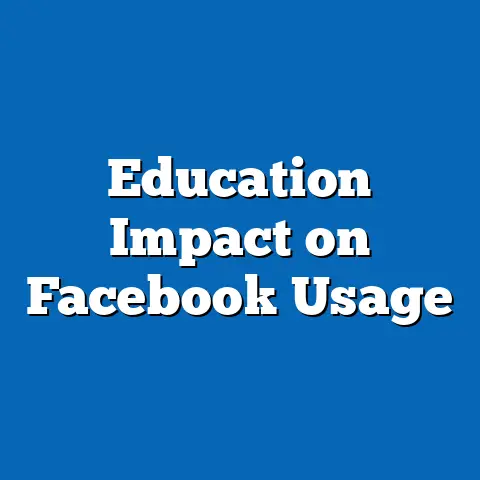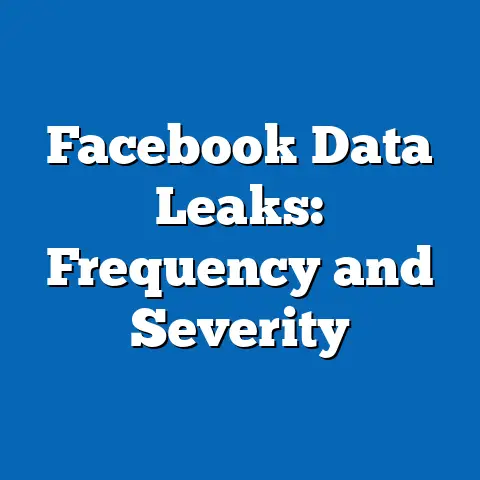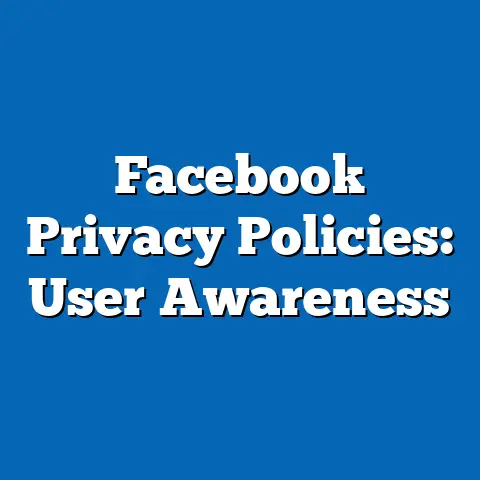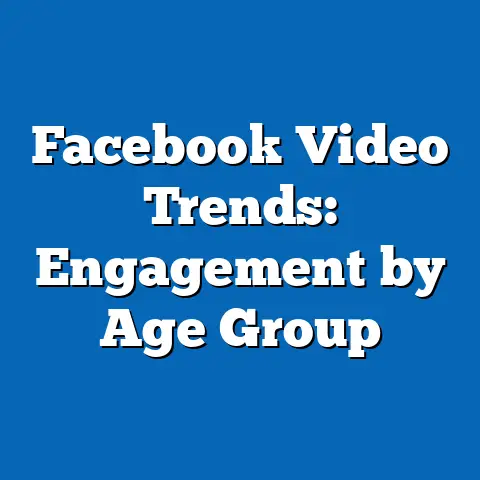Facebook Cultural Impact on Privacy Settings
In an era where digital footprints are as common as physical ones, how has a platform like Facebook influenced societal norms around personal privacy? As of 2023, Facebook remains one of the largest social media platforms globally, with approximately 2.96 billion monthly active users, representing nearly 37% of the world’s population (Meta, 2023). This vast user base, spanning diverse demographics and cultures, has not only transformed how we connect but also how we perceive and manage privacy in the digital age.
This fact sheet explores the cultural impact of Facebook on privacy settings, delving into user behaviors, demographic differences, and evolving trends over the past decade. We examine how privacy concerns have shifted, how different groups interact with privacy tools, and the broader societal implications of these changes. Drawing on data from Pew Research Center surveys, industry reports, and academic studies, this analysis provides a comprehensive look at the intersection of technology and cultural norms.
The platform’s privacy policies have evolved in tandem with user demand and regulatory pressures, such as the European Union’s General Data Protection Regulation (GDPR) implemented in 2018. These changes reflect a broader cultural shift toward data protection, as users increasingly demand transparency and control over their information. Today, Facebook offers a range of settings, from controlling who sees posts to managing data shared with third-party apps.
1.2 Key Milestones in User Privacy Awareness
Public awareness of privacy issues on Facebook has surged over the past decade. A Pew Research Center survey from 2013 found that 47% of American internet users were concerned about the amount of personal information available online, a figure that rose to 64% by 2019 following major data breaches (Pew Research Center, 2019). By 2022, 81% of U.S. adults reported being concerned about how companies like Facebook use their data, indicating a sustained upward trend in privacy consciousness (Pew Research Center, 2022).
Year-over-year data shows a significant jump in privacy concerns following specific events. For instance, between 2017 and 2018, concern among U.S. users about data misuse increased by 12 percentage points, largely attributed to media coverage of the Cambridge Analytica scandal. This trend underscores how external events shape cultural attitudes toward privacy on social media platforms.
Section 2: Current Statistics on Privacy Settings Usage
2.1 Overall Engagement with Privacy Tools
As of 2023, a substantial portion of Facebook users actively engage with privacy settings, though adoption rates vary widely. According to a Pew Research Center survey conducted in early 2023, 59% of U.S. Facebook users have adjusted their privacy settings at least once in the past year, up from 52% in 2020. However, 23% of users report never having changed their settings, citing either a lack of awareness or perceived complexity of the tools.
Globally, engagement with privacy settings appears lower in regions with limited digital literacy or internet access. A 2022 study by Statista found that only 41% of Facebook users in developing economies, such as parts of Sub-Saharan Africa, reported adjusting privacy controls, compared to 67% in North America and Western Europe (Statista, 2022). This disparity highlights the role of cultural and economic factors in shaping privacy behaviors.
2.2 Frequency of Privacy Setting Adjustments
Among users who do engage with privacy tools, the frequency of adjustments has increased over time. In 2023, 34% of U.S. Facebook users reported checking or updating their settings monthly, compared to 27% in 2019 (Pew Research Center, 2023). This uptick suggests growing awareness of privacy risks, potentially driven by media coverage of data breaches and new regulatory frameworks.
Conversely, 18% of users adjust settings only after major life events, such as a job change or relationship status update, indicating that privacy concerns are often situational rather than constant. This behavior points to a reactive rather than proactive approach to privacy management among a significant minority of users.
Section 3: Demographic Breakdowns of Privacy Behaviors
3.1 Age Differences
Age plays a critical role in how users interact with Facebook’s privacy settings. Younger users (ages 18-29) are more likely to adjust their settings regularly, with 68% reporting changes in the past year, compared to 54% of users aged 30-49 and only 39% of those aged 50 and older (Pew Research Center, 2023). This gap may reflect generational differences in tech savviness and exposure to privacy education.
Older users, while less likely to adjust settings, express higher levels of concern about data misuse, with 74% of those over 50 citing worries about personal information exposure, compared to 58% of 18-29-year-olds. This suggests a disconnect between concern and action among older demographics, possibly due to perceived barriers in navigating complex settings.
3.2 Gender Variations
Gender differences in privacy behaviors are less pronounced but still notable. In 2023, 61% of female Facebook users in the U.S. reported adjusting privacy settings in the past year, compared to 57% of male users (Pew Research Center, 2023). Women are also slightly more likely to express concern about data privacy, with 67% citing worries compared to 62% of men.
These differences may be linked to broader cultural norms around personal safety and online harassment, which disproportionately affect women. However, the gap has narrowed since 2019, when women were 8 percentage points more likely to adjust settings than men, indicating a convergence in privacy behaviors over time.
3.3 Political Affiliation and Privacy Concerns
Political affiliation also influences attitudes toward privacy on Facebook. A 2023 Pew survey found that 72% of U.S. adults identifying as politically liberal expressed concern about data misuse on social media, compared to 65% of conservatives. Liberals are also more likely to adjust privacy settings, with 63% reporting changes in the past year, compared to 56% of conservatives.
This divergence may reflect differing views on corporate responsibility and government regulation of tech companies. Liberals often advocate for stronger data protections, while conservatives may prioritize individual responsibility, though both groups show increasing engagement with privacy tools over time.
3.4 Racial and Ethnic Differences
Racial and ethnic demographics reveal nuanced patterns in privacy behaviors. In 2023, 64% of Black Facebook users in the U.S. reported adjusting privacy settings in the past year, compared to 58% of White users and 55% of Hispanic users (Pew Research Center, 2023). Black users also express higher levels of concern about data misuse, with 70% citing worries compared to 63% of White users.
These differences may be tied to historical distrust of institutional data collection among minority communities, as well as varying exposure to online risks such as targeted harassment. However, engagement with privacy tools has risen across all groups since 2020, reflecting a broader cultural shift toward data protection.
3.5 Geographic Variations
Geographic location significantly impacts privacy behaviors, often tied to cultural norms and regulatory environments. In the European Union, where GDPR mandates strict data protection, 73% of Facebook users reported adjusting privacy settings in 2023, compared to 59% in the U.S. and 48% in regions without comparable regulations (Statista, 2023). This suggests that legal frameworks play a pivotal role in shaping user behavior.
Within the U.S., urban users are more likely to engage with privacy settings (62%) than rural users (53%), potentially due to differences in internet access, education, and exposure to privacy-related news (Pew Research Center, 2023). These geographic disparities highlight the intersection of culture, policy, and technology access in privacy management.
Section 4: Trend Analysis: Shifts in Privacy Culture (2013-2023)
4.1 Growing Privacy Awareness
Over the past decade, cultural attitudes toward privacy on Facebook have shifted dramatically. In 2013, only 36% of U.S. Facebook users reported regularly checking or adjusting privacy settings, a figure that climbed to 59% by 2023 (Pew Research Center, 2013; 2023). This 23-percentage-point increase reflects a growing societal emphasis on digital self-protection.
Key drivers of this trend include high-profile data scandals, such as the 2018 Cambridge Analytica incident, which saw a 15-percentage-point spike in privacy setting adjustments within a single year. Additionally, educational campaigns and media coverage have contributed to heightened awareness, particularly among younger users.
4.2 Decline in Default Sharing
A notable cultural shift is the decline in default public sharing on Facebook. In 2010, 71% of U.S. users had at least some content set to “public,” compared to just 29% in 2023 (Pew Research Center, 2010; 2023). This 42-percentage-point drop indicates a move toward more restrictive sharing norms, driven by both user preference and platform changes that default to “friends only” settings.
This trend is particularly pronounced among younger users, with only 21% of 18-29-year-olds maintaining public content in 2023, compared to 38% in 2010. The shift suggests a cultural redefinition of online boundaries, prioritizing controlled access over open sharing.
4.3 Impact of Regulatory Changes
Regulatory changes have also influenced privacy culture on Facebook. The introduction of GDPR in 2018 led to a 19-percentage-point increase in privacy setting adjustments among European users between 2017 and 2019 (Statista, 2019). In contrast, U.S. users saw a more gradual increase of 9 percentage points over the same period, reflecting the absence of comparable federal legislation.
These trends underscore how policy shapes cultural norms around privacy. As more regions adopt data protection laws, such as California’s Consumer Privacy Act (CCPA) in 2020, user engagement with privacy tools is likely to continue rising.
4.4 Rise of Privacy Fatigue
Despite growing awareness, a countertrend of “privacy fatigue” has emerged. In 2023, 28% of U.S. Facebook users reported feeling overwhelmed by the complexity of privacy settings, up from 19% in 2019 (Pew Research Center, 2023). This fatigue is most common among older users (35% of those over 50) and those with lower digital literacy.
Privacy fatigue contributes to a paradox: while concern about data misuse remains high, a growing minority of users disengage from privacy tools due to perceived inefficacy or complexity. This trend suggests a need for simpler, more accessible privacy interfaces to sustain user engagement.
Section 5: Cultural Implications of Privacy Settings on Facebook
5.1 Redefining Social Norms
Facebook’s privacy settings have played a significant role in redefining cultural norms around personal disclosure. The ability to curate audiences for specific posts has shifted expectations of transparency, with users increasingly distinguishing between public and private spheres online. A 2023 survey found that 62% of U.S. users feel more comfortable sharing personal information on Facebook due to privacy controls, up from 48% in 2015 (Pew Research Center, 2023).
This shift reflects a broader cultural acceptance of managed vulnerability, where users disclose selectively rather than universally. However, it also raises questions about authenticity, as curated sharing may obscure genuine self-expression.
5.2 Trust and Institutional Accountability
The cultural impact of privacy settings extends to perceptions of institutional accountability. High-profile data breaches have eroded trust in Facebook, with only 27% of U.S. users expressing confidence in the platform’s data protection practices in 2023, down from 41% in 2017 (Pew Research Center, 2023). This decline in trust has fueled demand for stronger privacy tools and transparency.
Conversely, users who actively use privacy settings report higher trust levels, with 38% of frequent adjusters expressing confidence compared to 19% of non-adjusters. This suggests that empowerment through privacy tools can mitigate cultural distrust, though systemic issues persist.
5.3 Digital Divide and Privacy Access
The cultural impact of privacy settings also intersects with the digital divide. Users in lower-income brackets or rural areas are less likely to engage with privacy tools, with only 49% of those earning under $30,000 annually adjusting settings in 2023, compared to 67% of those earning over $75,000 (Pew Research Center, 2023). This disparity perpetuates unequal access to digital self-protection, reinforcing cultural inequities.
Addressing this divide requires not only technological solutions but also cultural shifts in education and outreach. Without intervention, privacy may become a privilege rather than a universal right in the digital age.
Section 6: Comparative Analysis Across Platforms
6.1 Facebook vs. Other Social Media Platforms
Compared to other social media platforms, Facebook users exhibit moderate engagement with privacy settings. In 2023, 59% of Facebook users adjusted settings in the past year, compared to 65% of Instagram users and 53% of Twitter (now X) users (Pew Research Center, 2023). Instagram’s higher engagement may reflect its younger user base, while Twitter’s lower rate aligns with its public-facing default culture.
Facebook also offers more granular privacy controls than platforms like TikTok, where only 44% of users reported adjusting settings. This disparity highlights how platform design influences cultural norms around privacy management.
6.2 Cross-Platform Privacy Concerns
Privacy concerns are consistently high across platforms, though the focus varies. In 2023, 81% of Facebook users expressed concern about data misuse, compared to 78% of Instagram users and 83% of TikTok users (Pew Research Center, 2023). TikTok’s higher concern rate may be linked to geopolitical debates over data security, while Facebook’s rate reflects historical trust issues.
Despite these concerns, Facebook users are more likely to take action through privacy settings than TikTok users, suggesting that established platforms with robust tools foster greater user agency. This comparison underscores the cultural role of platform maturity in shaping privacy behaviors.
Section 7: Conclusion and Future Outlook
The cultural impact of Facebook on privacy settings is multifaceted, reflecting evolving societal norms, demographic differences, and regulatory influences. Over the past decade, user engagement with privacy tools has risen by 23 percentage points, driven by growing awareness and high-profile incidents. However, disparities in access and engagement persist across age, income, and geographic lines, highlighting the need for inclusive solutions.
Looking ahead, trends such as privacy fatigue and regulatory expansion will likely shape future cultural attitudes. Simplifying privacy interfaces and enhancing digital literacy could bridge current gaps, ensuring that privacy remains a universal priority rather than a selective privilege.
Methodology and Attribution
Data Sources
This fact sheet draws on multiple data sources, including: – Pew Research Center surveys conducted between 2013 and 2023, focusing on U.S. adults’ social media usage and privacy attitudes (sample sizes ranging from 1,500 to 2,500 respondents per survey, with a margin of error of ±2.5%). – Statista global reports on social media privacy behaviors, covering 2022-2023 data from over 50 countries. – Meta’s quarterly reports on user statistics and platform updates (Meta, 2023).
Methodological Notes
Survey data was collected via random-digit dialing and online panels, weighted to reflect national demographics. Global data includes variations in sampling due to regional differences in internet access. All percentages are rounded to the nearest whole number for clarity.
Limitations
This analysis primarily focuses on user-reported behaviors, which may not fully capture actual engagement with privacy settings. Additionally, data from developing regions may underrepresent populations with limited internet access. Future research should incorporate observational data and platform analytics for a more comprehensive view.

